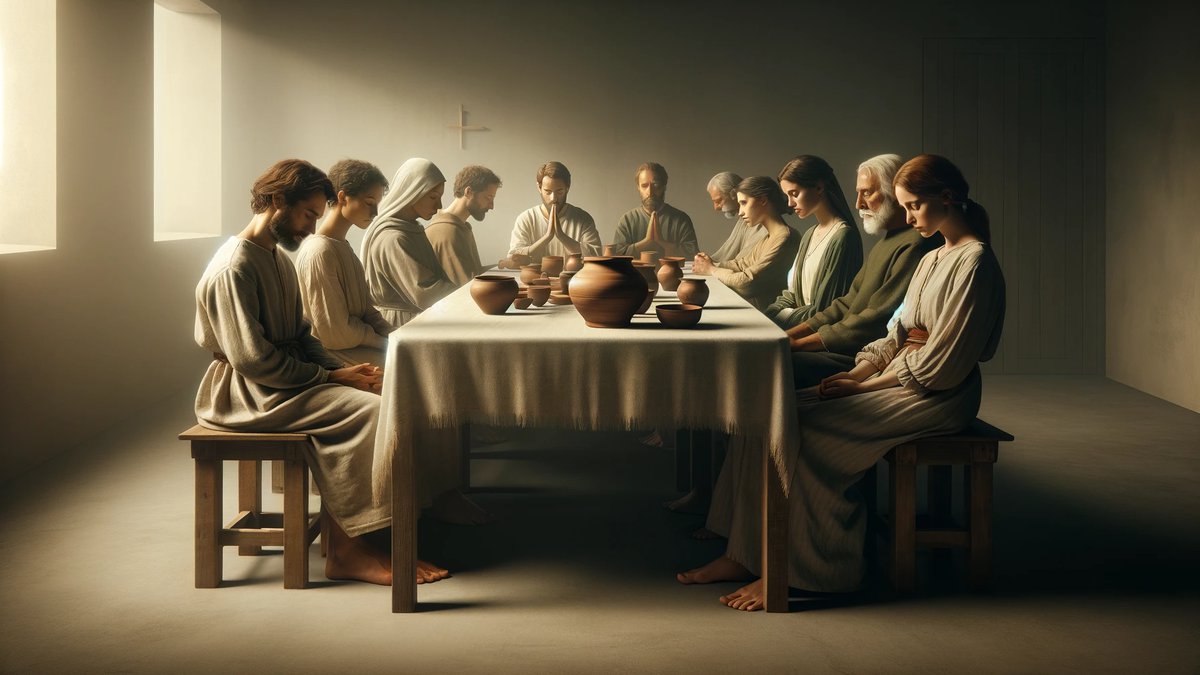Home>Special Themes>Why Is The Color Of Lent Purple


Special Themes
Why Is The Color Of Lent Purple
Published: February 28, 2024
Ericka Andersen, an editor at Christian.net, expertly merges digital strategy with content creation, focusing on faith and societal issues. Her communication skills enhance the platform's engaging narratives, fostering meaningful dialogue on belief's impact on society.
Discover the significance of the color purple in Lent and its special themes. Explore the spiritual and historical reasons behind this symbolic color. Unlock the deeper meaning of Lent's purple hue.
(Many of the links in this article redirect to a specific reviewed product. Your purchase of these products through affiliate links helps to generate commission for Christian.net, at no extra cost. Learn more)
Table of Contents
The Symbolism of Purple in Christianity
-
Royalty and Kingship: In Christianity, the color purple is often associated with royalty and kingship. It symbolizes the sovereignty of Christ and his dominion over the heavens and the earth. This association with royalty is deeply rooted in the biblical narrative, where purple was used to adorn kings and nobles.
-
Penitence and Preparation: Another significant symbolism of purple in Christianity is its representation of penitence and preparation. It is a color of solemnity and reflection, often used during the Lenten season to signify a period of repentance and spiritual introspection.
-
Suffering and Sacrifice: The color purple also carries the symbolism of suffering and sacrifice. It is reminiscent of the suffering endured by Jesus Christ during his crucifixion, making it a poignant reminder of the ultimate sacrifice made for the redemption of humanity.
-
Majesty and Mystery: Additionally, purple is associated with majesty and mystery in Christian symbolism. It reflects the divine mystery of the faith and the majestic nature of God's presence, inviting believers to contemplate the profound mysteries of the Christian faith during the Lenten season.
Read more: Why Is Purple Used In Advent
Historical Use of Purple in Lent
-
Early Christian Tradition: The historical use of purple in Lent can be traced back to early Christian tradition. During the early centuries of Christianity, the color purple was a rare and expensive dye, often reserved for royalty and the wealthy elite. Its scarcity and rich hue made it a fitting symbol for the solemnity and significance of the Lenten season.
-
Imperial Connections: The association of purple with Lent can also be linked to its historical significance in the Roman Empire. Purple was a color of imperial authority and was used in the garments of Roman emperors and officials. As Christianity spread throughout the Roman Empire, the use of purple in Lent became intertwined with the cultural and symbolic associations of the color.
-
Penitential Practices: The historical use of purple in Lent was also influenced by the early penitential practices of the church. Lent was a period of fasting, prayer, and repentance, and the color purple served as a visual reminder of the solemn and introspective nature of this season. It was a way to set apart this sacred time from the rest of the liturgical year.
-
Symbol of Mourning and Penance: Additionally, the historical use of purple in Lent can be seen as a symbol of mourning and penance. The deep, somber hue of purple reflected the sorrow and contrition associated with the Lenten observance, inviting believers to enter into a period of reflection and self-examination as they prepared for the commemoration of Christ's passion and resurrection.
-
Continued Tradition: Over time, the historical use of purple in Lent has continued to be a prominent and meaningful practice within the Christian tradition. Its rich historical and symbolic significance has ensured that the color purple remains an integral part of the visual and spiritual landscape of the Lenten season, connecting contemporary believers with the ancient roots of their faith.
The Significance of Purple in Lent Today
-
Visual Reminder of Spiritual Themes: In contemporary Christian practice, the use of purple in Lent serves as a visual reminder of the spiritual themes and significance of the season. The color's deep and solemn hue prompts believers to engage in introspection, repentance, and preparation as they journey through the Lenten period.
-
Symbol of Contrition and Humility: Today, purple continues to symbolize contrition and humility within the context of Lent. It encourages believers to adopt a humble and penitent attitude, acknowledging their need for spiritual renewal and reconciliation with God and others.
-
Connection to Christ's Sacrifice: The significance of purple in Lent today also lies in its connection to Christ's sacrifice. As believers contemplate the suffering and sacrifice of Jesus Christ, the color purple serves as a poignant symbol of the profound love and redemption offered through his crucifixion.
-
Distinctive Liturgical Identity: Within the liturgical context, the use of purple in Lent distinguishes this season from others in the Christian calendar. It sets apart the solemnity and penitential nature of Lent, creating a distinctive visual and spiritual identity for this period of preparation and reflection.
-
Invitation to Spiritual Renewal: The presence of purple in Lent today extends an invitation to spiritual renewal and transformation. It beckons believers to engage in acts of prayer, fasting, and almsgiving, fostering a deeper connection with God and a renewed commitment to living out the values of the Christian faith.
-
Continued Symbolism of Royalty: Despite its associations with penitence and humility, the use of purple in Lent today also maintains its symbolism of royalty. It serves as a reminder of the kingship of Christ and the ultimate triumph of his resurrection, infusing the Lenten observance with hope and anticipation of the Easter celebration.
-
Cultural and Ecumenical Significance: The significance of purple in Lent today transcends denominational boundaries, carrying cultural and ecumenical significance. It unites diverse Christian communities in a shared visual language, reinforcing the universal nature of the Lenten journey and the foundational beliefs of the Christian faith.
-
Symbol of Spiritual Preparation: Ultimately, the use of purple in Lent today signifies a period of spiritual preparation and anticipation. It calls believers to prepare their hearts and minds for the commemoration of Christ's passion and the joyous celebration of his resurrection, inviting them to embrace the transformative power of the Lenten season.
The Spiritual Meaning of Purple in Lent
-
Representation of Royalty and Kingship: The spiritual meaning of purple in Lent encompasses its representation of royalty and kingship in the Christian faith. It serves as a visual reminder of the sovereignty of Christ and his divine authority over all creation. The rich and regal hue of purple symbolizes the exalted and majestic nature of Christ, inviting believers to contemplate his kingship and lordship during the Lenten season.
-
Symbol of Penitence and Renewal: Within the spiritual context of Lent, purple holds profound symbolism as a color of penitence and renewal. It calls believers to embrace a spirit of repentance and introspection, acknowledging their need for spiritual cleansing and restoration. The somber yet hopeful tone of purple encourages a deep sense of contrition and a longing for inner renewal as individuals prepare for the commemoration of Christ's passion and resurrection.
-
Reflection of Christ's Sacrificial Love: The spiritual meaning of purple in Lent also reflects the sacrificial love of Christ. As believers immerse themselves in the Lenten observance, the color purple serves as a poignant symbol of the suffering and sacrifice endured by Jesus Christ for the redemption of humanity. It prompts contemplation of the profound love and selflessness exemplified in Christ's crucifixion, inspiring a response of gratitude and devotion during this sacred season.
-
Invitation to Spiritual Contemplation: Purple's spiritual significance in Lent extends to its role as an invitation to spiritual contemplation. The deep, mysterious nature of the color encourages believers to delve into the profound mysteries of the Christian faith, seeking a deeper understanding of God's redemptive plan and the transformative power of Christ's sacrifice. It beckons individuals to engage in reflective prayer and meditation, fostering a deeper connection with the spiritual truths embodied in the Lenten journey.
-
Embrace of Humility and Grace: In the spiritual landscape of Lent, purple embodies the virtues of humility and grace. It calls believers to embrace a spirit of humility, recognizing their dependence on God's grace and mercy. The color's solemnity and depth evoke a sense of reverence and awe, prompting individuals to approach the Lenten season with a humble and contrite heart, open to receiving the abundant grace and forgiveness offered through Christ's atoning sacrifice.
-
Symbol of Hope and Anticipation: Despite its associations with penitence and solemnity, the spiritual meaning of purple in Lent also carries elements of hope and anticipation. It serves as a precursor to the joyous celebration of Easter, reminding believers of the ultimate triumph of Christ's resurrection. The color purple infuses the Lenten observance with a sense of hopeful expectation, pointing to the promise of new life and spiritual transformation that awaits at the culmination of the Lenten journey.
In essence, the spiritual significance of purple in Lent encompasses a multifaceted tapestry of symbolism, inviting believers to engage in a profound and transformative spiritual pilgrimage as they journey through this sacred season.
The Connection Between Purple and Penitence
-
Symbol of Spiritual Reflection: Purple's association with penitence in the context of Lent is deeply rooted in its symbolism as a color of spiritual reflection and introspection. As believers enter into the Lenten season, the solemn and contemplative nature of purple serves as a visual prompt for individuals to engage in deep self-examination and examination of conscience. It invites them to confront their shortcomings, seek reconciliation, and realign their lives with the values of the Christian faith.
-
Visual Representation of Contrition: The deep, somber hue of purple embodies the spirit of contrition and repentance, offering a visual representation of the inward sorrow and remorse that characterize the penitential journey of Lent. It serves as a poignant reminder of the need for humility and a willingness to acknowledge and seek forgiveness for one's transgressions, both in relation to God and to fellow human beings.
-
Call to Spiritual Renewal: Purple's connection to penitence in Lent also extends to its role as a call to spiritual renewal. The color's depth and richness evoke a sense of spiritual gravity, urging believers to confront their spiritual complacency and embrace a renewed commitment to living out the principles of love, mercy, and justice. It prompts individuals to embark on a journey of inner transformation, seeking to embody the virtues of compassion, forgiveness, and reconciliation.
-
Embrace of Humility and Grace: In the context of penitence, purple serves as a symbol of humility and grace, inviting believers to approach the Lenten season with a humble and contrite heart. It signifies a willingness to acknowledge one's imperfections and limitations, while also embracing the abundant grace and mercy offered through the redemptive work of Christ. The color purple thus becomes a visual expression of the profound interplay between human humility and divine grace within the framework of penitence.
-
Preparation for Spiritual Rebirth: Purple's connection to penitence in Lent ultimately points to the preparatory nature of this season. It signifies a period of spiritual gestation and preparation, wherein individuals engage in acts of self-examination, confession, and reconciliation in anticipation of the spiritual rebirth symbolized by the Easter celebration. The color's association with penitence underscores the transformative potential inherent in the Lenten journey, as believers seek to emerge from this season spiritually renewed and restored.
In essence, the connection between purple and penitence in the context of Lent weaves a tapestry of spiritual significance, inviting believers to embark on a profound and introspective pilgrimage of repentance, renewal, and reconciliation.















